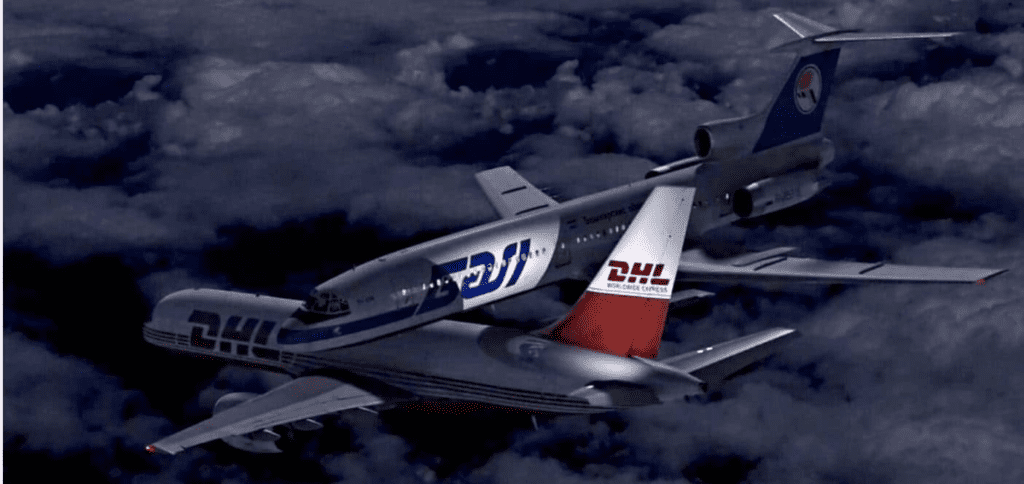
The Traffic Collision Avoidance System (TCAS) uses a specific algorithm to determine which aircraft should climb and which should descend when two planes are on a collision course. The algorithm takes into account the relative positions, speeds, and altitudes of the two aircraft, as well as their projected flight paths. When two TCAS-equipped aircraft are on a collision course, the TCAS on each aircraft will issue a resolution advisory (RA) to the pilots. The RA will indicate which aircraft should climb and which should descend.
The RA is based on the principle of “climb/descend, opposite direction” to avoid any potential collision. The TCAS also uses a system of “threat zones” to determine the appropriate RA. If the two aircraft are in the same threat zone, the aircraft at the lower altitude is instructed to climb, while the aircraft at the higher altitude is instructed to descend. If the two aircraft are in different threat zones, the aircraft in the higher threat zone is instructed to climb, while the aircraft in the lower threat zone is instructed to descend. It’s important to note that while TCAS is a highly effective system, it is not foolproof. The ultimate responsibility for avoiding collisions remains with the pilots.

The Traffic Collision Avoidance System (TCAS) is an aircraft collision avoidance system that helps pilots prevent mid-air collisions. It is a crucial safety feature installed on most commercial and larger general aviation aircraft.
TCAS operates by using transponder signals to exchange information between aircraft. It determines the relative positions, altitudes, and velocities of nearby aircraft, and calculates the risk of a potential collision. If the system detects a potential conflict, it issues a Resolution Advisory (RA) to the pilots of the involved aircraft.
When a potential collision is detected, the TCAS algorithm calculates the best course of action to avoid the conflict. The algorithm considers several factors, including the projected flight paths, altitudes, and closure rates of the aircraft. It aims to provide a clear and unambiguous instruction to each pilot to either climb or descend.
The TCAS typically provides two types of RAs: “Climb” and “Descend.” The specific RA instruction depends on the relative altitude and projected flight paths of the aircraft involved. The system is designed to ensure that the two aircraft will pass each other safely, with a vertical separation of at least 1,000 feet or more.
When an RA is issued, it is displayed to the pilots as visual and aural alerts in the cockpit. The pilots are expected to follow the RA guidance promptly and take appropriate action to avoid the potential collision. Following the RA ensures a coordinated and predictable response from both aircraft, reducing the risk of a mid-air collision.
It’s important to note that TCAS operates independently of ground-based air traffic control (ATC) systems. It provides an additional layer of safety by enabling pilots to take immediate action to avoid a collision, even in situations where ATC instructions may not be sufficient or timely.
TCAS has proven to be highly effective in reducing the risk of mid-air collisions and has been credited with preventing numerous potential accidents. However, it is still crucial for pilots to maintain vigilance and situational awareness to ensure the overall safety of flight operations.
Below Explanation by – Jan Richter
The Traffic Collision Avoidance System (TCAS) was designed not only to warn, but also to provide eluding propositions for pilots independent from air traffic control.
To have a functioning TCAS system installed, you need a Mode-S transponder that collects and calculates all relevant flying parameters in real-time such as altitude, climb/sinkrate, speed, heading and the exact GPS-position.
TCAS is communicating both ways, constantly reading the parameters of all surrounding TCAS-devices (when existent) and place them on a screen. (see above).
Showing other traffic alone is not a big deal but that can change at a moment’s notice until the system “foresees” there is a conflict looming.
TCAS scans all traffic in a 40 miles (NM) range around and 9,900 ft. above and below the aircraft. Then TCAS predicts their soon-to-be-positions by extending the current flightpaths and estimate where any aircraft will be in 2 minutes, one minute or even a shorter timespan.
For example: Flight1 cruises on an airway at 31,000 ft. and Flight2 cruises in opposite direction at 33,000 ft. on that same airway. Normally both flights would pass each other in a 2,000 ft. distance. About 10 nautical miles before their passage point, Flight2 begins to descend. Immediately TCAS on both aircraft detect that this alteration created a conflict situation posing a threat to both aircraft, and triggers a Traffic Advisory (TA) in combination with an aural: “Traffic, Traffic”.
If Flight2 descends further – below the minimum vertical safety margin of 1,000 ft – a Resolution Advisory (AD) comes next. TCAS now arranges with both parties. Its alerts work both ways and adresses either cockpits because its much safer when both crews react to an imminent conflict than just one party. The warning comes in accordance with their respective flightpaths regardless what type of flight or type of aircraft is in the game.
In our scenarion: the descending Flight2 will receive a “Level off, Level off” command, whereas Flight1 will get a “Descend, Descend” instruction until both aircraft flew past each other. TCAS completes its alert mode by saying: “Clear of conflict”.
Here is an overview of all available advisories and warnings based on the TCAS II system.



![✈️ Private Pilot License (PPL) Cost Breakdown in 2025 [USA Edition]](https://aeropeep.com/wp-content/uploads/2025/05/image-24-300x200.png)

